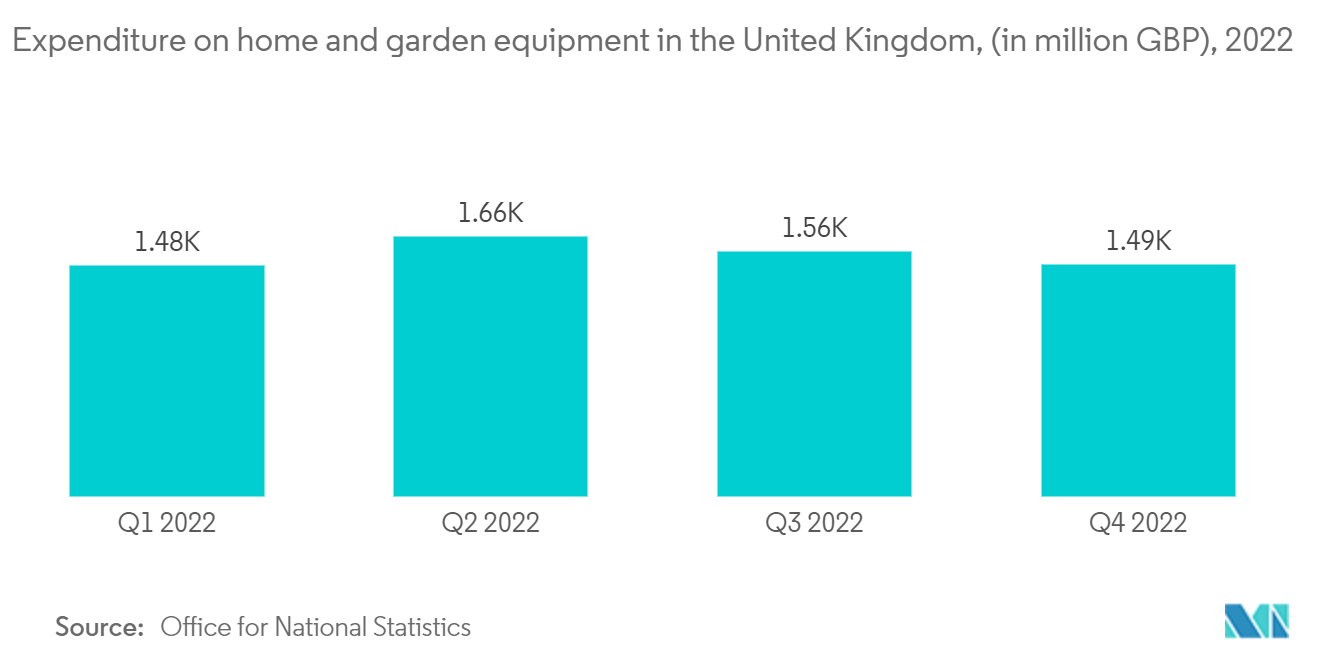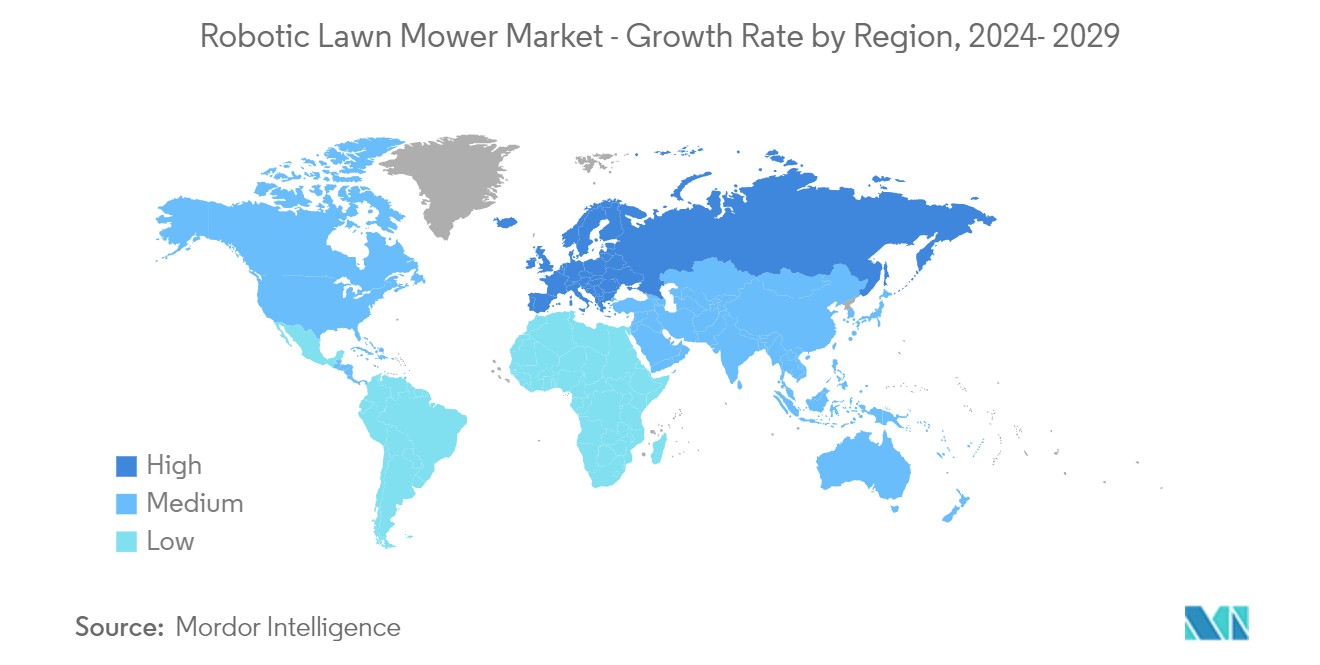Market Trends of Robotic Lawn Mower Industry
The Residential Segment is Expected to be the Largest Segment by End User
The fast and busy lifestyle of people across the world due to urbanization has increased the demand for autonomous machinery/systems to help people in everyday work. Additionally, increased spending on backyard beautification, backyard cookouts, and garden parties, as well as the desire to save time spent on lawn maintenance activities, are driving demand for a variety of gardening tools, which is driving the target market.
The market is also influenced by the expanding construction and tourism industries around the globe. Furthermore, shifting consumer preference for efficient lawn mowers and the growing popularity of autonomous equipment requiring minimal user intervention is expected to boost global demand for robotic lawn mowers.
Major players are investing heavily in research and development to enhance the features of robotic lawn mowers. Key players are integrating ledge sensors and additional features such as laser vision, lawn mapping, smart navigation, and self-emptying into their products to improve their performance and efficiency. The market is expected to benefit from the increased availability of more efficient robotic lawn mowers in the near future. For instance,
- In May 2022, Toro announced the launch of a battery-powered residential yard care category robotic mower. It is the industry’s first vision-based localization system with wire-free navigation, making this setup manageable. It is tailored to each yard without a pricey and failure-prone underground boundary wire installation. The company also offers a dedicated smartphone application that helps users customize their mowing schedule.
Furthermore, recent advances in the development of lithium-ion batteries and robot technology are undoubtedly responsible for this increase in the sales of robotic mowers.

Europe is Expected to be the Market Leader
Robotic lawn mowers are used for various gardening and lawn-maintenance applications in Europe's residential and commercial sectors.
One of the major factors driving growth in the region is the popularity of lawns to provide aesthetic and pleasing premises and gardens. The increased adoption of robotic lawn mowers in countries like the United Kingdom and the Netherlands is expected to drive market growth.
Furthermore, many Europeans own independent residential spaces, typically private lawns and gardens, boosting demand for robotic lawn mowers. Aside from that, the rising demand for automation in the commercial sector and increased awareness of the benefits of robotic lawn mowers, such as noise-free operations, time management, and energy conservation, have boosted the market growth in the region. The inclusion of smart sensory controls in robotic lawn mowers, which enable automated mowing of a given landscape, is expected to impact market demand during the forecast period.
Key players in Europe are adopting new technologies to provide quality products to their customers. The rise in promotional activities is also expected to have a positive impact on the market in the region. For instance,
- In June 2022, Segway announced that its Navimow robot lawn mower would be available in 12 European countries by the end of May. The countries on this list include the United Kingdom, Netherlands, Italy, and Sweden. Navimow is available in three models, with the largest able to mow an area up to 3,000 m² (32,392 ft²) between charges.



